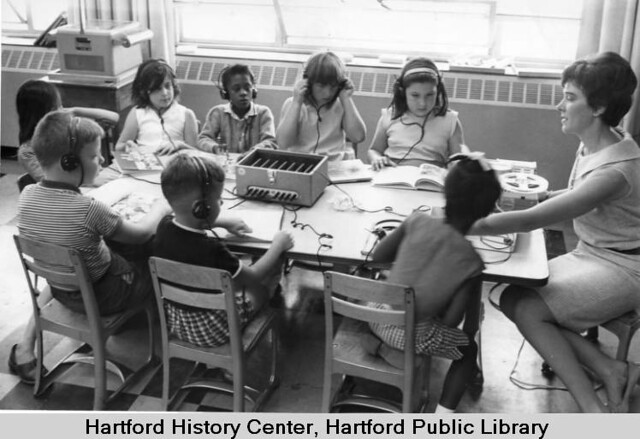Author: Shanese Caton
Shanese’s Web Proposal
Shanese Caton
EDUC308- Professor Jack Dougherty
November 14, 2011
Web Project Proposal
1) What particular story about cities, suburbs, and schools do you wish to tell, why does it deserve its own web page, and who is your intended audience?
This web project will examine the Sheff v. O’Neil cases, remedies, and whether this educational reform is resulting in higher levels of learning and success instead of mere integration. The historic case tends to focus solely on the integration of races in the public school system in Hartford and surrounding suburbs but there seems to be less emphasis on how students are performing in suburban and magnet schools and the curriculum in the magnet school system. The performance of students through the Sheff remedies are not usually commented on or an issue of focus in the appeals brought to the court by Sheff plaintiffs. It is my hope that, this project will evaluate the success or failure of these efforts in providing an education for students that is of equal quality to that of suburban students and providing an education in an integrated environment.
This project is geared towards policy makers involved in the Sheff remedy process as well as Sheff plaintiffs. Although social integration is key in the process to fix the inequalities that Hartford has had to endure, those inequalities do not just result in students being separated from those of other nationalities but they result in Hartford students receiving unequal educations to those in the Suburbs.
2) What additional reading and/or research do you plan to do to enhance your background knowledge on this story? Be specific and include full citations when appropriate.
I plan on researching how Hartford students perform in three types of schools, magnet schools, average performing Hartford public schools, and suburban public schools. In doing this I will be able to compare their performance to analyze whether or not merely moving students to a new location or the creation of new schools. This data will be retrieved through the gathering of CMT scores as well as other scores from tests that these students take annually. In addition to test scores, I plan on examining how many students in each of these schools move on to higher levels of education. This will help to determine if they were achieving the necessary academic and social requirements for entrance into these institutions.
3) What kinds of items do you plan to integrate and how do they fit into the story you wish to tell? Does copyright law allow you to include these items?
I plan to integrate charts of the data I receive about test scores, student demographics and their relations to the Sheff v. O’Neill case as well as justification for why they are a focus group, and their socioeconomic status.
Shanese – Exercise 6
Before historical cases like Sheff v. O’Neal and during the Civil Rights Movement, schools began to incorporate racial integration methods that could attempt to undo separate but equal laws in education. Such attempts include bussing minority students to suburban schools that had more funds, was located in a safer environment, and provided a better education. As shown in the photo below African American and Hispanic students began being bused to suburban, and predominantly white, neighborhoods .
Although children were being bused to better schools, schools located in predominantly non-white neighborhoods were being isolated thus denying children of an equal educational opportunity. Supreme Court cases like Sheff v. O’Neal furthered the efforts to achieve equal education opportunity to all children regardless of their ethnic background. In the video below, children, Wildaliz and Eva Bermudez, of the Bermudez (one of the plaintiffs in this case) explain their experience in the public school system in the southern end of Hartford and how their case and the efforts afterwards helped to change the school system in their predominantly Hispanic neighborhood. Eva, being the oldest, saw most of the impact her case had from how her high school Hartford High changed from being on the verge of losing its accreditation to gaining it and being diverse in the ethnicities of the students attending it.
Source: Bermudez, Wildaliz and Eva. Oral history interview on Sheff v. O’Neill school desegregation by Anique Thompson for the Cities, Suburbs, and Schools Project, June 30, 2011. Available from the Trinity College Digital Repository, Hartford Connecticut (http://digitalrepository.trincoll.edu/cssp/).
Sheff v. O’Neal Oral Interview with Eva and Wildaliz Bermudez
Wildaliz and Eva Bermudez, June 30, 2011 from Trinity College on Vimeo.
Exercise 4 by Shanese Caton *Click on each unit for more details*
The presented map is on the Maximum Density for Multifamily Housing, in units per acre, in municipalities in the greater Hartford area. This map demonstrates how many multifamily housing units can be built in the spans of about one acre. In some municipalities like East Hartford, large amounts of multifamily housing units can be built. In the case of East Hartford, 87.12 units can be built in one acre of land. The municipalities in the lightest shade of blue represent the smallest number of multifamily housing units that can be built in one acre, which is ranged from 0 to 25 units. The ranges from lowest number of units to largest are 0-25 units (shaded in the lightest blue), 25-50 units, 50-75 units, and 75-100 units (shaded in the darkest blue). The units shaded in red do not allow multifamily housing in their area.
Shanese’s Practice Exercise 4
